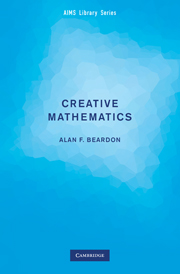3 - Giving a Presentation
Published online by Cambridge University Press: 16 May 2024
Summary
Giving a good presentation is difficult. If a presentation does not go well don't be discouraged, but make sure you learn from the experience. All of us have given a good presentation, and a bad presentation. Here are some guidelines which might help you to deliver a good presentation. First you have to prepare for the presentation; then you have to present it to the audience.
The preparation
First think about who your audience will be; this is very important and will govern what you say in your talk. If you are giving a mathematical lecture it is important to know the age and stage of development of the audience; you would give a very different talk to children than to graduate students!
Decide upon your message: what is the purpose of your talk? What do you want the audience to know and understand? Plan how to get your main points across effectively. It is best to begin with something simple or familiar to everyone and then build up to a difficult point later. Choose the main points of your talk carefully, and consider how much time you have to explain these points, and what you can reasonably expect your audience to understand. A good way to do this is to make a list of what you might include, and then eliminate some of the items from the list until you have a reasonable amount of material left. Do not give too much, or too little, information: if you give too little the audience's thoughts will wander, while if you give too much the audience will stop concentrating. It is also very important to decide what not to tell your audience – some things are too complicated to include in a talk, and you will not have time to explain everything you know about the subject.
It is best to prepare more than you think you will need; then you will not run out of things to say if the earlier material took less time than you thought it would. In addition, if the audience seems confused you will be able to switch to a different topic; if they seem to be finding the material difficult, you can switch to an easier topic.
- Type
- Chapter
- Information
- Creative MathematicsA Gateway to Research, pp. 13 - 16Publisher: Cambridge University PressPrint publication year: 2009

